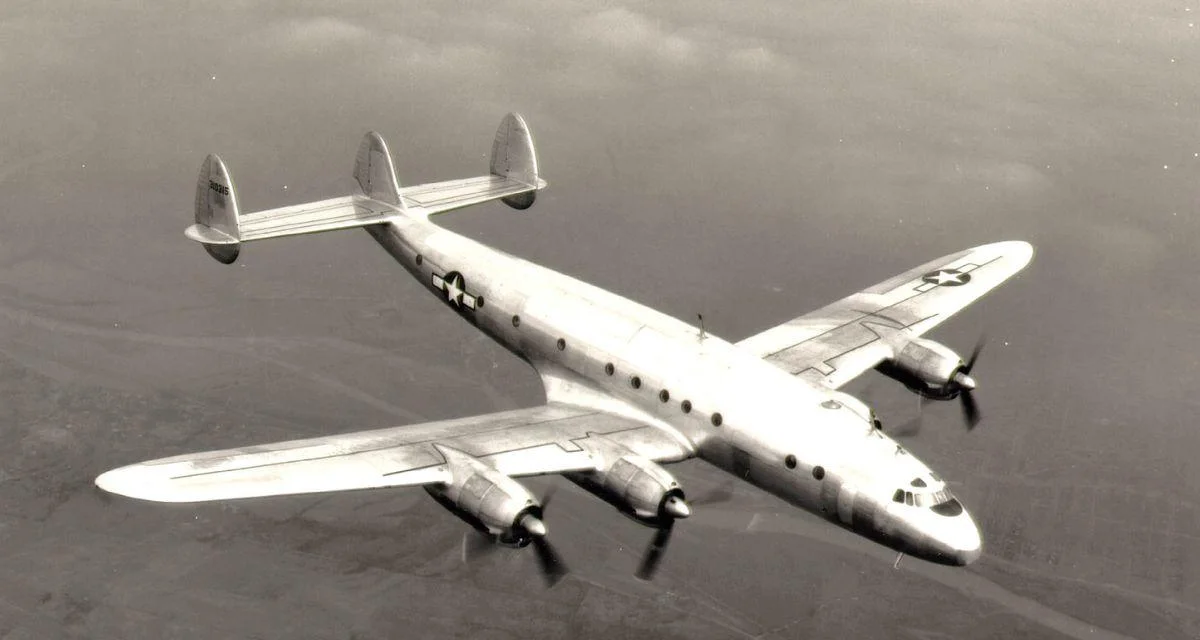These aircraft were products of significant innovation when first developed. In 1939, Howard Hughes and TWA president Jack Frye met with Lockheed executives to discuss what would become the L-049 Constellation. The resulting aircraft featured pressurization technology that allowed higher-altitude flight—one of several advances that made it faster and more comfortable than previous models such as the Douglas DC-3.
During World War II, all early commercial orders for the Constellation were converted into military transports known as C-69s. Following the war, variants such as the L-1049 Super Constellation entered service with airlines like TWA, Eastern Airlines, Air France, and Lufthansa. Military versions received designations including C-121 for transports and RC-121/EC-121/WV-2 for airborne warning roles.
Technical specifications set new benchmarks for propeller-driven airliners: four Wright R-3350 engines provided up to 3,400 horsepower each; pressurization allowed cruising altitudes above most weather; and a unique triple-tail enabled hangar compatibility without modifications.
VH-EAG “Southern Preservation” was delivered to the United States Air Force in 1955 before serving various Air National Guard units until retirement in 1977. After nearly two decades in storage at Davis-Monthan Air Force Base in Arizona, HARS volunteers undertook a five-year restoration effort involving thousands of hours and dozens of trips between Australia and Arizona. The aircraft was registered as VH-EAG in 1994 and began flying again in 1996 after being painted with Qantas colors.
N422NA “Bataan” started its career with long-range transport missions during events such as the Berlin Airlift before being converted into a VIP shuttle for General MacArthur during the Korean War. Later used by NASA under tail code N422NA for Apollo program calibration flights, it spent more than twenty years outdoors at Fort Rucker before Planes of Fame acquired it in 1993 for restoration.
Both organizations now offer public access to their Connies through tours or flights at scheduled events. Their continued operation depends on volunteer labor and partnerships with museums or sponsors to manage rising maintenance costs and regulatory requirements.
“Connies remain invaluable ambassadors of mid-century aeronautical progress, appearing in documentaries, hosting educational flights, and connecting generations through the shared wonder of piston-engine flight,” according to those involved with their preservation efforts.
Looking ahead, ongoing support from institutions will be essential to ensure these historic planes continue flying while honoring their legacy.
 Alerts Sign-up
Alerts Sign-up




































